
You’ve finally collapsed onto the couch after a long day. You turn on Netflix to watch that show everyone is talking about. But within three minutes—maybe less—you feel a phantom itch. Your hand drifts to the cushion beside you, finds your phone, and unlocks it.
Suddenly, you’re watching a drama about 19th-century British royalty while simultaneously scrolling through a Reddit thread about air fryers, checking a work email you definitely shouldn’t answer right now, and liking a photo of your cousin’s dog.
We used to call this “multitasking.” We wore it like a badge of honor. But let’s be honest: it’s exhausting.
For years, the wellness industry told us the villain was Blue Light. They sold us amber-tinted glasses and “Night Shift” modes, promising that if we just filtered the light, we’d be fine. But that narrative is hardware-focused, and frankly, it misses the point. The problem isn’t just the light entering your eyes; it’s the chaos entering your mind.
This is the “Second Screen” Syndrome. It’s not a vision problem. It’s a cognitive crisis. And based on the research I’ve been digging into, it is fundamentally rewiring how we think, sleep, and even eat.
Here is what is actually happening to your brain when you split your focus, and more importantly, how you can get it back.
You Are Not Alone (But That’s Not Comforting)
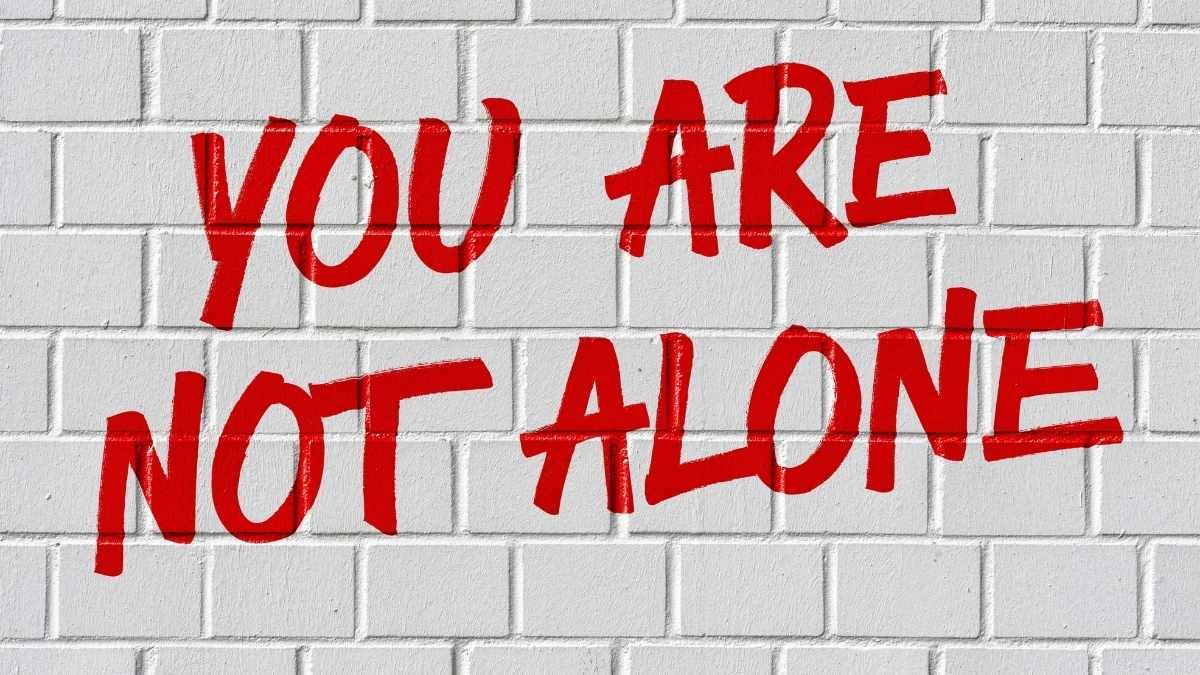
If you feel like you can’t watch a movie without your phone anymore, you aren’t broken. You’re just part of a massive statistical shift.
The “Second Screen” isn’t a niche habit for tech-obsessed teenagers anymore. It’s the default mode of human existence. Global studies show that 86% of internet users now use another device while watching TV.1 We are terrified of a single moment of boredom.
Check out how this breaks down by generation. The numbers are staggering:
Screen Usage and Distraction Rates
Gen Z
“The phone is the primary screen; the TV is just background noise.”
Millennials
“Juggling work emails and social feeds while trying to relax.”
Gen X / Boomers
“Often looking up info related to the show (but still distracted).”
High Income (>$80k)
“More money = more devices = more distraction.”
The “Context Switch” Trap

Here’s the kicker: we aren’t usually looking up things related to the movie. We aren’t checking who that actor is (what the industry calls “Meshed” content).
The data shows that only 7% of viewers are looking at content related to the main screen. The other 93% of us are engaging in “Stacked” content—totally unrelated scrolling, shopping, or emailing.
This matters because of the “Switch Cost.” If you look up the actor in the movie, your brain stays in the same context. But if you switch from a movie to an email, your brain has to tear down one mental model and build another. And you are doing this every few minutes.
The Neuroscience: Why You Can’t Stop
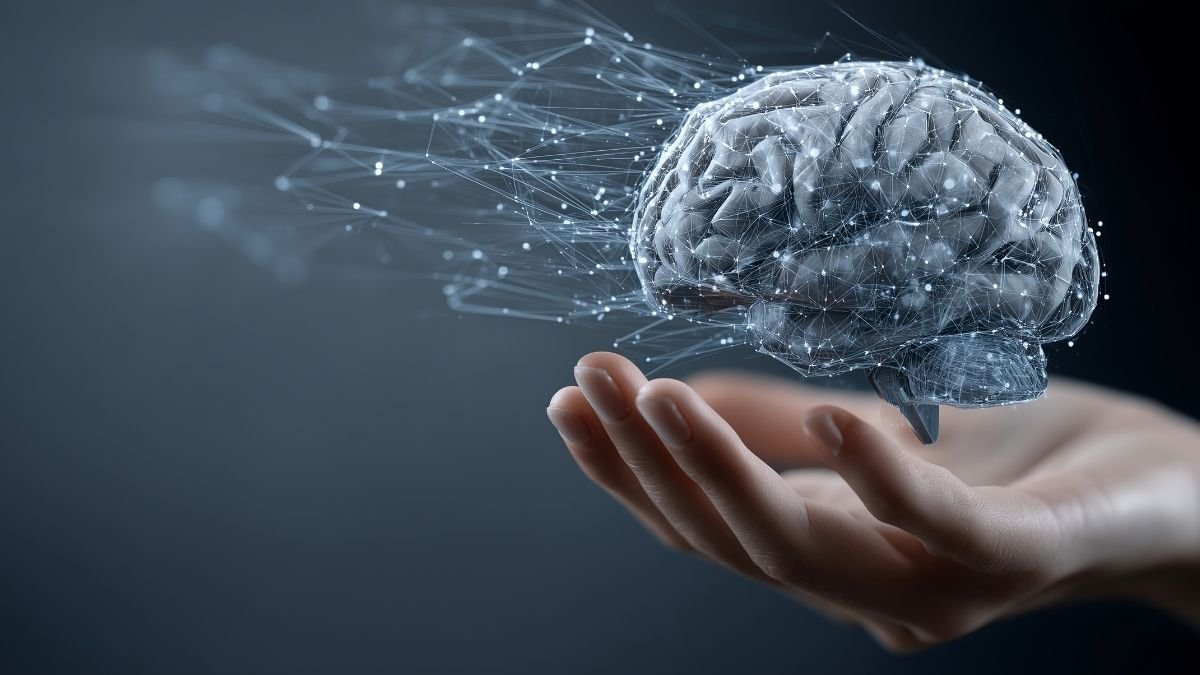
Why do we do this? Why do we sabotage our own relaxation?
It’s not because you lack willpower. It’s because your brain is being hijacked by a mechanism called Reward Prediction Error.
Dopamine isn’t just about pleasure; it’s about seeking. Your brain is evolutionarily wired to hunt for information. When you pick up your phone, you don’t know what you’re going to find. It could be a boring email (low reward) or a viral video (high reward). That unpredictability—the “maybe”—releases more dopamine than a guaranteed reward.
Neuroscientist Dr. Adam Gazzaley explains it as a battle between two systems:
- Top-Down Attention: Your goal (“I want to watch this movie”).
- Bottom-Up Attention: The distraction (The buzz, the red dot, the flash).
Your brain has a “novelty bias.” It is wired to prioritize the new, shiny thing over the sustained thing. The apps on your phone are engineered to exploit this bottom-up system, overriding your conscious goals before you even realize you’ve unlocked the screen.
The Cost: “Brain Rot” is Real

We joke about “brain rot,” but the science suggests it’s a legitimate physiological change.
The 47-Second Attention Span
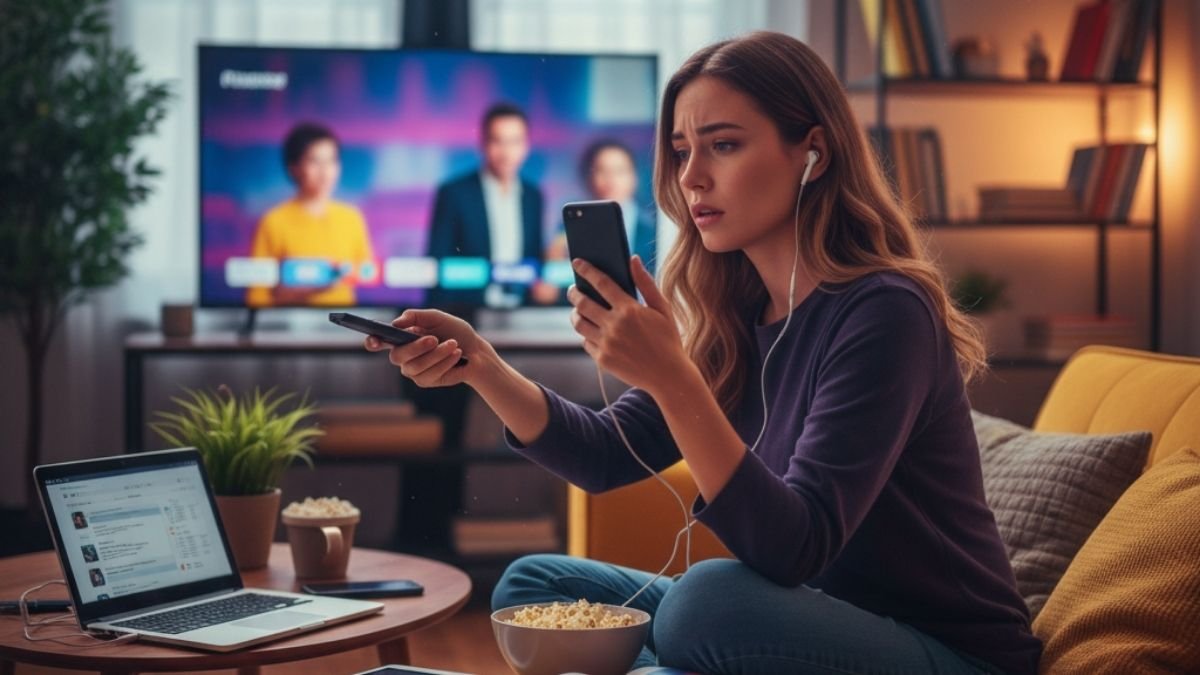
Dr. Gloria Mark, who has studied this for decades at UC Irvine, found a terrifying statistic. In 2004, the average attention span on a screen was 2.5 minutes. By 2024? It had plummeted to 47 seconds.
We are fracturing our time into such small slivers that we can’t engage in deep thought. This leads to “Attention Residue.” When you switch from the TV to a text, your brain doesn’t switch instantly. A piece of your focus remains “stuck” on the previous task. If you switch back and forth rapidly, you end up with a brain full of residue and zero clarity.
The “Suckers for Irrelevancy”
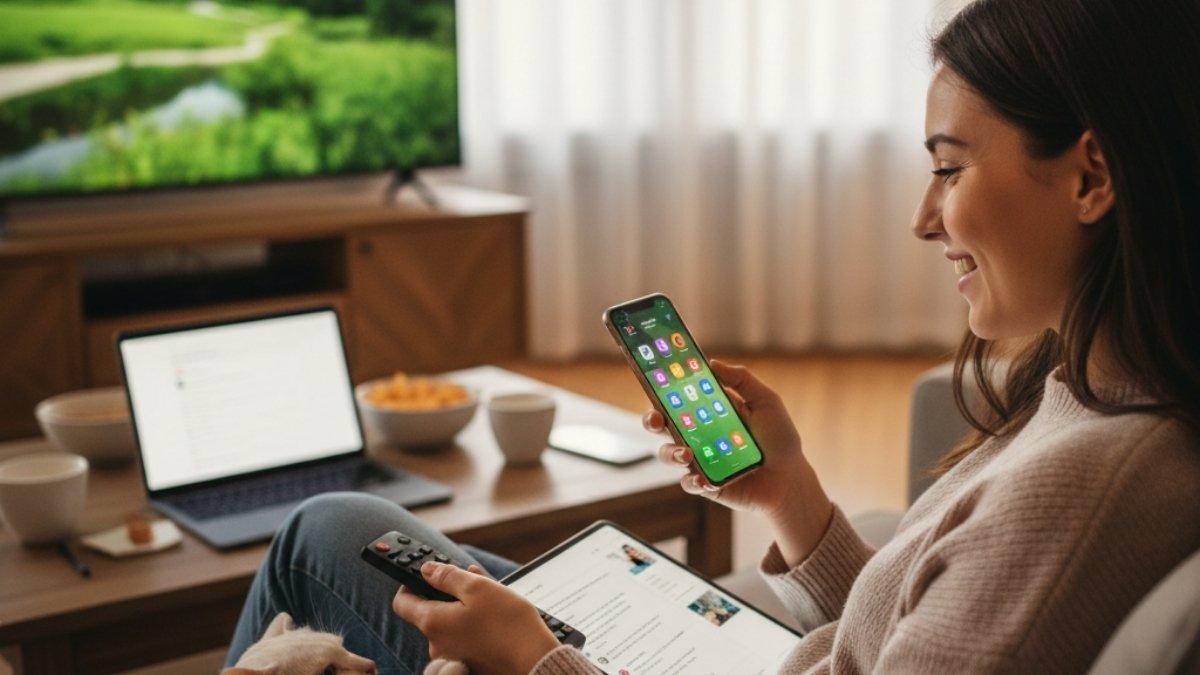
There was a famous study at Stanford that tried to find the “superpower” of heavy multitaskers. The researchers assumed these people must be great at filtering out noise.
They were wrong.
The heavy multitaskers were terrible at everything. They couldn’t filter out irrelevant info. They couldn’t organize their memory. They were slower at switching tasks than people who rarely multitask. As Professor Clifford Nass put it, they were “suckers for irrelevancy”. By trying to be everywhere, they were effectively nowhere.
The Physical Toll:
MRI studies have even shown that heavy media multitaskers have reduced grey matter density in the Anterior Cingulate Cortex (ACC)—the part of the brain responsible for emotional control and empathy.13 We are literally thinning out our ability to control our impulses.
Sleep: It’s Not Just the Light, It’s the Stress

Here is where I need you to rethink your bedtime routine. We’ve focused so much on blue light that we missed the bigger picture.
Yes, blue light suppresses melatonin. But research shows it only delays sleep onset by about 10 minutes on average. If light were the only problem, blue-blocking glasses would solve everything. They don’t.
The real enemy is Cognitive Arousal.
When you check your phone in bed—reading a snarky tweet, seeing a work email, checking the news—you are engaging your Sympathetic Nervous System (Fight or Flight). You are flooding your system with cortisol and adrenaline.
- Melatonin says, “It’s time to sleep.”
- Cortisol says, “There is a threat! Stay awake!”
Cortisol wins. Even if your room is dark, if your brain is arguing on Twitter, you aren’t sleeping deeply. This leads to “sleep fragmentation,” where you wake up feeling exhausted even after 8 hours in bed.
The “Mindless Eating” Effect

This habit is hitting our waistlines, too. We’ve normalized the “TV Dinner,” but the second screen makes it worse.
Digestion starts in the brain. We call it the “Cephalic Phase”—seeing and smelling food prepares your stomach. But when you are scrolling and watching TV while eating, your brain misses the memo.
- Missed Satiety Signals: You don’t realize you’re full because you aren’t paying attention.
- Glucose Spikes: Believe it or not, distracted eating can lead to higher blood sugar spikes after a meal because your metabolic response is dampened.
- The Craving: Stress from multitasking often drives us toward “hyper-palatable” foods—sugar, salt, and fat.
Busting the Myths

Let’s clear up a few things that we tell ourselves to justify the habit.
Myth: “Women are better multitaskers than men.”
Reality: Nope. Science says we all suck at it equally. A study in PLOS One showed that both men and women suffer the same drop in IQ and efficiency when multitasking. Women just tend to do more of it out of necessity, not biology.
Myth: “Young people are digital natives; they can handle it.”
Reality: This is dangerous. Just because Gen Z uses devices more doesn’t mean their brains process it better. In fact, heavy multitaskers (often younger) perform worse on cognitive tests than older, light multitaskers. They aren’t adapting; they are just habituating to distraction.
So, What Do We Do? (The Fix)

Okay, that was a lot of bad news. But here is the good news: Your brain is plastic. It can heal. You can get your focus back. But you can’t do it with “willpower.” You need a system.
The “Friction” Method
We need to make dopamine harder to get.
- The Proximity Effect: If the phone is within reach, your brain burns energy ignoring it (this is called “brain drain”).
- The Fix: When you watch a movie, charge your phone in the kitchen. Physically separate yourself from the device.
The “Tech Break” (Retraining the Brain)

Psychologist Dr. Larry Rosen suggests we treat this like an anxiety disorder. We have FOMO (Fear Of Missing Out).
- Check your phone for 1 minute. Scratch the itch.
- Set a timer for 15 minutes.
- Put the phone face down. Watch TV.
- When the alarm goes off, check for 1 minute.
- Repeat, gradually increasing the time to 30 or 60 minutes. This teaches your brain that the world won’t end if you disconnect for a while.
Beware the “Third Screen”
A quick warning: Smartwatches are dangerous. They attach the distraction to your body. A study showed that checking a smartwatch while driving takes 2.52 seconds—nearly twice as long as checking a phone—because it requires more cognitive focus to navigate the tiny screen. If you want to reclaim your focus, take the watch off when you get home.
Need a Little Help Breaking the Loop? Look Into These
Look, knowing the science is one thing, but changing the behavior is another. We are fighting against algorithms designed by some of the smartest engineers in the world, all aimed at keeping our eyes glued to the screen. Sometimes, “willpower” isn’t enough. You need tools. You need friction. You need something to replace the habit with.
I’ve looked into some products that can genuinely help you build better boundaries. I’m not saying you need to buy your way out of this problem, but if you find yourself reaching for the phone purely out of muscle memory, these might just be the circuit breakers you need.
1. The “Phone Jail”: kSafe Time Locking Container

If you simply cannot trust yourself (and honestly, most of us can’t), this is the nuclear option. You put your phone in, spin the dial, and lock it for 30 minutes, an hour, or all night. There is no override code. You have to break the safe to get it out. It sounds extreme, but it forces you to be present because the option to be distracted is physically removed.
2. The “Silent Fidget”: ONO Roller

Half the time we pick up our phones while watching TV, it’s just because our hands are bored. We crave tactile stimulation. The ONO Roller is a silent, heavy, handheld gadget that rolls effortlessly in your palm. It satisfies that urge to “do something” with your hands without pulling your attention away from the movie or the conversation. It’s sleek, quiet, and doesn’t look like a cheap toy.
3. The “Focus Trainer”: Time Timer MOD
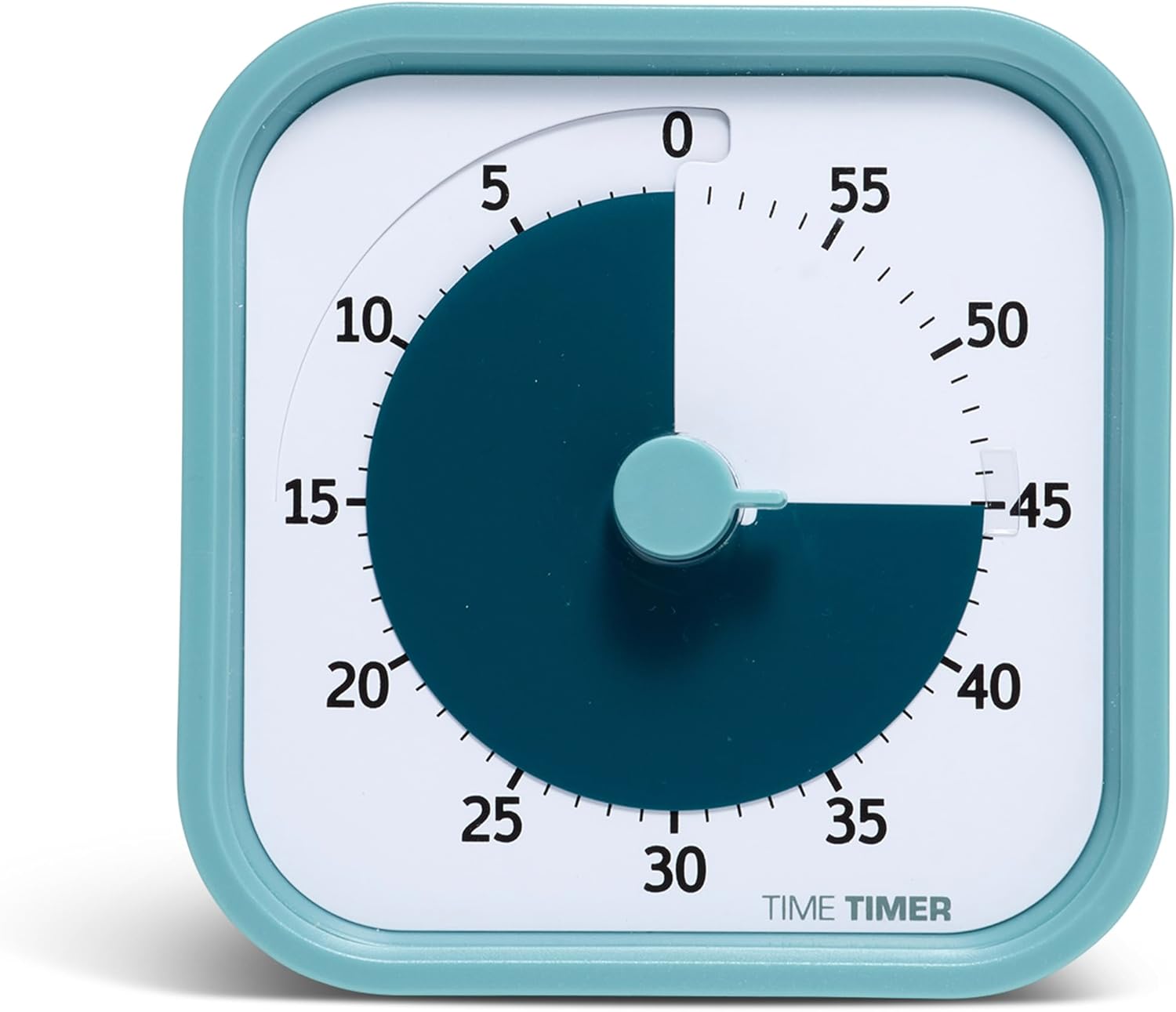
This is the tool for Dr. Larry Rosen’s “Tech Break” method. Unlike a digital timer on your phone (which just invites you to look at notifications), this is a visual analog timer. A red disk disappears as time passes. It allows you to see exactly how much “focus time” you have left at a glance, without the risk of getting sucked into a notification loop. Perfect for training your brain to tolerate 15, 30, or 60 minutes of disconnection.
4. The “Dopamine Reset”: The Five Minute Journal

If your biggest struggle is the “bedtime scroll” or the “morning check,” swap the phone for this. It’s designed to be quick (literally 5 minutes). Instead of flooding your brain with news and stress the moment you wake up, you focus on gratitude and intention. It rewires that reward prediction error loop from “seeking novelty” to “appreciating the present.”
5. The “Analog Second Screen”: Adult Coloring Books

If you absolutely must do something while watching TV, choose a “passive” task that doesn’t compete for your language processing center. Knitting is great, but coloring is easier to pick up. A complex mandala coloring book keeps your hands and visual cortex busy, allowing you to listen to the show without the “context switching” cost of reading emails or texts. It calms the nervous system rather than exciting it.
The Bottom Line
The “Second Screen” feels like efficiency. It feels like relaxation. But it’s actually a thief. It steals your memory of the show you watched, the satisfaction of the meal you ate, and the quality of the sleep you need.
We are facing a crisis of attention. The most radical thing you can do for your health right now isn’t a juice cleanse or a new workout. It’s to sit on the couch, watch a movie, and just… watch the movie. Reclaim your cognitive sovereignty. The email can wait.






